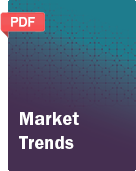
Brand Analysis Of Key 20 Antifungal Drugs For Athlete's Foot
- Published: Aug, 2024
- Report ID: GVR-MT-100202
- Format: PDF, Horizon Databook
- No. of Pages/Datapoints: 50
- Report Coverage: 2024 - 2030
Table of Contents
Chapter 1. Executive Summary
Chapter 2. Market Trends, By Country
2.1. U.S.
2.2. Canda
2.3. UK
2.4. Germany
2.5. France
2.6. Italy
2.7. Spain
2.8. Denmark
2.9. Sweden
2.10. Norway
2.11. Japan
2.12. China
2.13. India
2.14. Australia
2.15. South Korea
2.16. Thailand
2.17. Brazil
2.18. Mexico
2.19. Argentina
2.20. South Africa
2.21. Saudi Arabia
2.22. UAE
2.23. Kuwait
Chapter 3. Competitive Landscape
3.1. Analysis of Top 20 Antifungal Drug Brands [Qualitative and Quantitative (Revenue (USD Million), and Market Share (%)]
3.1.1. Lamisil (Terbinafine)
3.1.2. Lotrimin (Clotrimazole)
3.1.3. Tinactin (Tolnaftate)
3.1.4. Micatin (Miconazole)
3.1.5. Desenex (Undecylenic Acid)
3.1.6. Absorbine (Tolnaftate)
3.1.7. Aftate (Tolnaftate)
3.1.8. Fungi-Nail (Undecylenic Acid)
3.1.9. Mycelex (Clotrimazole)
3.1.10. Cruex (Undecylenic Acid)
3.1.11. Blis-To-Sol (Undecylenic Acid)
3.1.12. Ecoza (Efinaconazole)
3.1.13. Jublia (Efinaconazole)
3.1.14. Ketodan (Ketoconazole)
3.1.15. Nizoral (Ketoconazole)
3.1.16. Oxistat (Oxiconazole)
3.1.17. Spectazole (Econazole)
3.1.18. Penlac (Ciclopirox)
3.1.19. Loprox (Ciclopirox)
3.1.20. Mentax (Butenafine)
3.2. SWOT Analysis of Key Market Players
Chapter 4. Consumer Preferences
4.1. Consumer Buying Patterns and Preferences
4.2. Consumer Awareness and Perception of Brand Effectiveness
Chapter 5. Pricing Strategies
5.1. Pricing Analysis of Top 20 Antifungal Brands
5.2. Market Positioning Strategies of Leading Brands
5.3. Impact of Pricing on Consumer Choice and Market Share
Chapter 6. Innovations and R&D
6.1. Recent Innovations and R&D Activities in Antifungal Drugs
6.2. Pipeline Products and Their Potential Market Impact
Chapter 7. Regulatory Environment
7.1. Regulatory Scenario
7.2. Reimbursement Scenario
